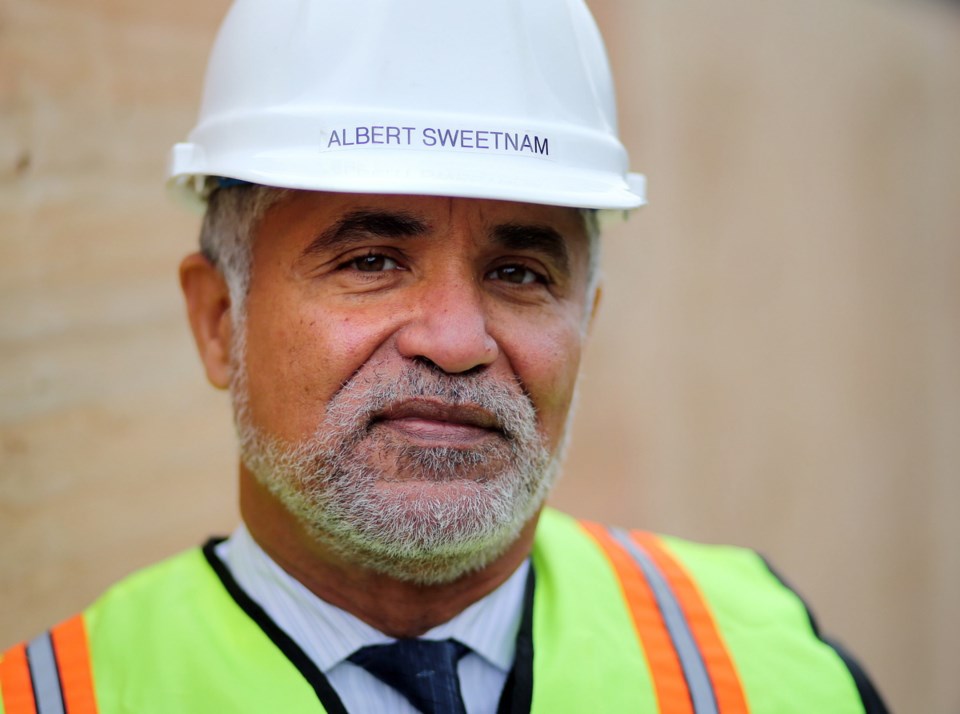Albert Sweetnam, former head of the Capital Regional District’s now-defunct Seaterra sewage treatment program, continued to be among the top earners at the CRD last year — for not being on the job.
Sweetnam’s job wrapped up in September 2015, but according to just-released CRD financial documents, he continued to draw $224,121 in salary in 2016. It’s a bit of a drop from 2015, when Sweetnam was paid $283,089.53 in salary and expenses. And taxpayers can take heart — at least he filed for no expenses in 2016.
Local governments are required to disclose salaries of employees making more than $75,000 a year by June 30.
Sweetnam’s payout was just part of the cost of moving on from Seaterra, said Victoria Mayor Lisa Helps, who chairs the CRD’s sewage committee, but noted she wasn’t in the position when Sweetnam’s contract was negotiated.
“We had to put an end to that program and, yeah, that was an expensive way of doing it,” Helps said. “When I was put in as chair of the sewage committee, we had to take a handle on spending on a project that was going nowhere until we got a project going. So that was a cost for setting up a project team before the project was ready to go.”
Sweetnam was hired on a five-year contract in 2013 at $290,000 a year to manage construction of the CRD’s then proposed $788-million sewage treatment project. The Seaterra plan stalled when Esquimalt refused to allow variances to zoning for the plant to be built at McLoughlin Point.
As CRD directors spent the next year plus trying to figure out a Plan B, Seaterra’s role diminished to almost nothing. Staffing dropped to single digits from more than 20 and Sweetnam’s job was officially ended.
After a fruitless effort by CRD directors to develop a replacement plan, the province stepped in and appointed a project board to decide on and oversee a new project. The new project is being built at the same McLoughlin Point site rejected by Esquimalt.
Sweetnam stopped working at the CRD in the fall of 2015. A CRD spokesman couldn’t immediately say how much more money will be paid to Sweetnam. His five-year contract started on Sept. 9, 2013, so it should end in September 2018. But it’s unclear whether changes were made after the contract was signed.
There are newcomers on the sewage front who made more than $75,000 in 2016.
Three members of the project board were paid more than $75,000 in 2016, including: chairwoman Jane Bird, who was paid $125,267 in salary and expenses; vice-chair Don Fairbairn, who received $114,301 in salary and expenses; and board member Jim Burke, who collected $113,476 in salary and expenses. Those amounts do not reflect a full year.
Meanwhile, several of the CRD’s top executives received salary increases of between four per cent and almost 10 per cent between 2015 and 2016.
Chief administrative officer Bob Lapham was the CRD’s top earner, making $252,041, plus $9,146 in expenses, for a total of $261,186 — a 4.5 per cent salary bump over 2015. Lapham also filed for $1,701 in expenses in his capacity as a member of the sewage-treatment project board.
Larisa Hutcheson, general manager of parks and environmental services, made $204,787 in salary and benefits in 2016 — an 8.6 per cent salary increase over 2015.
Former financial officer Dianne Lokken was paid $192,771 in salary and expenses in 2016 — a salary increase of about 4.5 per cent.
Ted Robbins, general manager of integrated water services, was paid $196,763 in salary and expenses in 2016, an increase of 9.7 per cent over 2015.
Kevin Lorette, general manager of planning and protective services, was paid $192,771 in salary and benefits in 2016, a 5.7 per cent increase in salary over the previous year.
Corporate officer Brent Reems was paid $122,381 in 2016.
CRD chairwoman Barb Desjardins said increases for senior staff over and above the cost of living were recommended in an independent salary review conducted for the CRD three years ago and are intended to bring executive pay in line with that of other similar organizations.
Another salary review will be conducted this year, she said.



